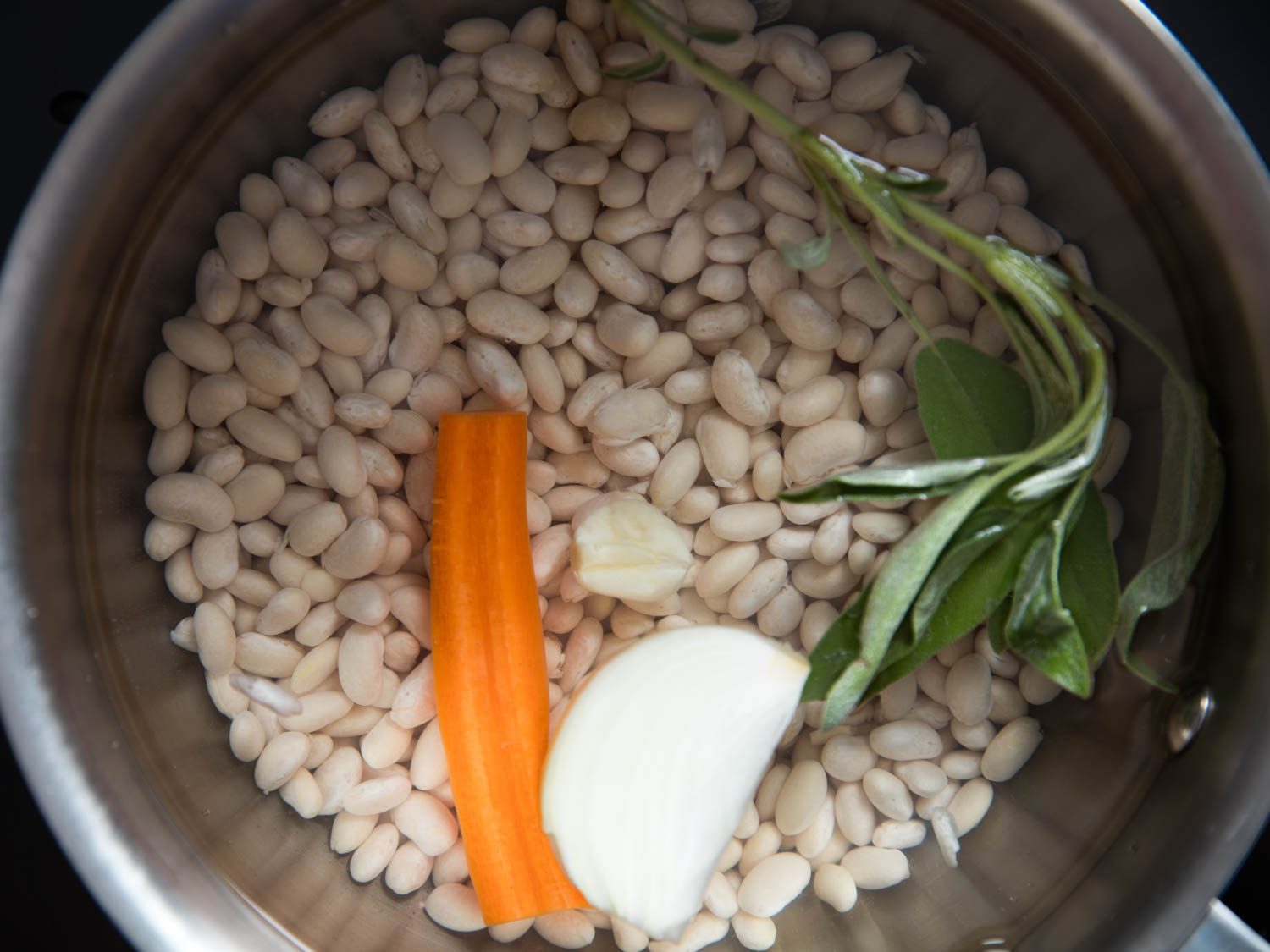
[Photographs: Vicky Wasik]
When it comes to convenience, dried beans can never beat canned beans. But when it comes to flavor, dried beans have no competition at all, although that depends on cooking them correctly. Here are the ins and outs of getting the perfect batch of beans every time.
Before You Begin
It’s helpful to remember that canned beans start out as dried beans—they’ve just been cooked in the can, where they remain sterilized until someone pops the top. Canned beans, though, tend to taste…canned. Their flavor is one-dimensional and it isn’t particularly delicious. On the other hand, dried beans that have been well seasoned and cooked with aromatics (more on both below) have a complex earthiness and a wonderful starchy sweetness.
Dried beans come in a dizzying number of sizes and colors: some are large, some are small; some are white, while others are black, and some are beige or red; some are monotoned and some come speckled like a leopard. The thing they have in common is they’re all legumes, grown fresh, then dehydrated to give them an extended (though not endless) shelf life.
You can read a lot more about beans in our Guide to Beans, but for our purposes here, the most important thing to remember is that there’s a ton of variation in the bean world, and the best way to prepare a bean depends on the kind and quality you have at hand.
Get our favorite recipes starring beans »
Should You Soak Dried Beans?
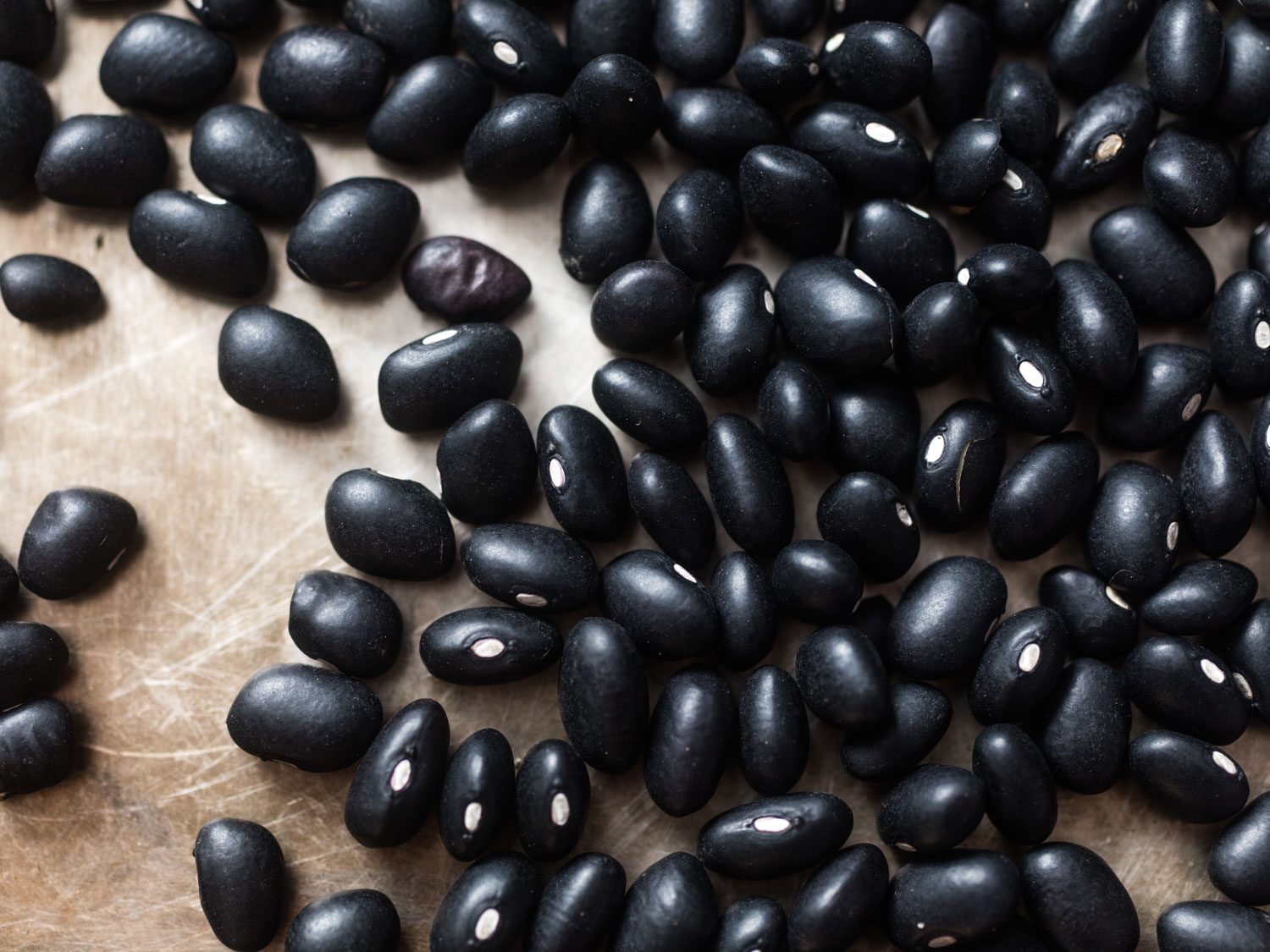
Ah, the good old bean-soaking argument. Most people insist you have to soak. Then some renegade comes along and tries to blow the whole thing up by saying soaking is totally unnecessary.
So, who’s right? Well, they both are, sorta. The truth is that it depends on the beans, both in terms of the bean variety and also its quality.
Variety is easier, so let’s start with that. Some beans, usually smaller ones with thinner skins, can skip the soaking step without consequence. At most, you’ll have a slightly longer cooking time. Examples of such beans include black beans (see our black bean soaking test results here), lentils, and black-eyed peas. As a bonus, skipping the soaking step with these beans yields a better flavor, because it’s not being leeched out and poured down the drain.
Heftier beans, including chickpeas, navy beans, pinto beans, and more, are a different story. Some people will swear up and down that you never need to soak those beans either. But those people haven’t done enough tests. I have, and I’ve found that you can sometimes get away with not soaking those beans, but not always. Whether or not you need to soak beans depends heavily on their quality and age—the lower quality they are, and the longer they’ve been sitting on the shelf, the more they’ll benefit from a soak. Unfortunately, there’s rarely an easy way to know how old the beans you’ve just bought are, which means soaking is almost always a smart move.
Even though dried beans are generally considered to be a shelf-stable dry good that never goes bad, the reality is that they continue to dry out as they sit. And of course, they do not do that evenly. What this means is that a bag of old dried beans will likely have some that are more desiccated than others, and those extra-dry beans can take significantly longer to cook.
I know this from experience: The chef at a Tuscan restaurant I used to work at was famous for his bean dishes, and he’d import the new crop of beautiful dried Italian heirloom beans every year. I’d cook them all year long. At first, they cooked beautifully—totally even, with creamy centers and hardly a blown-out bean in sight. But as the year went on, that would change. By the end of the year, I would struggle to get all the beans to cook evenly, and I would frequently end up with a pot half full of overcooked beans disintegrating into mush while the rest of the beans were still undercooked.
The one thing that helped mitigate the problem as the beans got older? Soaking them for many hours first. By soaking the beans, the skins and centers have time to re-hydrate, which you can see by how much they swell in the water, often doubling in volume overnight. Soaked old beans still won’t cook as well as they did when they were freshly dried, but they’ll cook a heck of a lot better than if you hadn’t soaked them at all.
That’s anecdotal evidence, of course, so I’ve done more controlled bean-soaking experiments since. Using cannellini beans and chickpeas for my tests, both of which I bought at a local supermarket, I tried both an overnight soak and no soak at all. After two hours, the pre-soaked cannellini were perfectly cooked, with a decent but not perfect degree of evenness. Compare that to the no-soak cannellini beans: After more than three hours, some were disintegrating and waterlogged while others still had an unpleasantly crunchy bite.
The results of my chickpea testing were even more extreme, with the soaked ones reaching doneness in two and a half hours, while the no-soak ones were still totally underdone at three and a half hours. I eventually gave up and threw those away.
Here’s the take-away: Skip the soak on thin-skinned beans like black-eyed peas, black beans, and lentils. For other beans, it’s best to soak unless you know for sure that you’re dealing with high quality, freshly dried beans, in which case you can skip it.
Should You Add Salt When Cooking Beans?
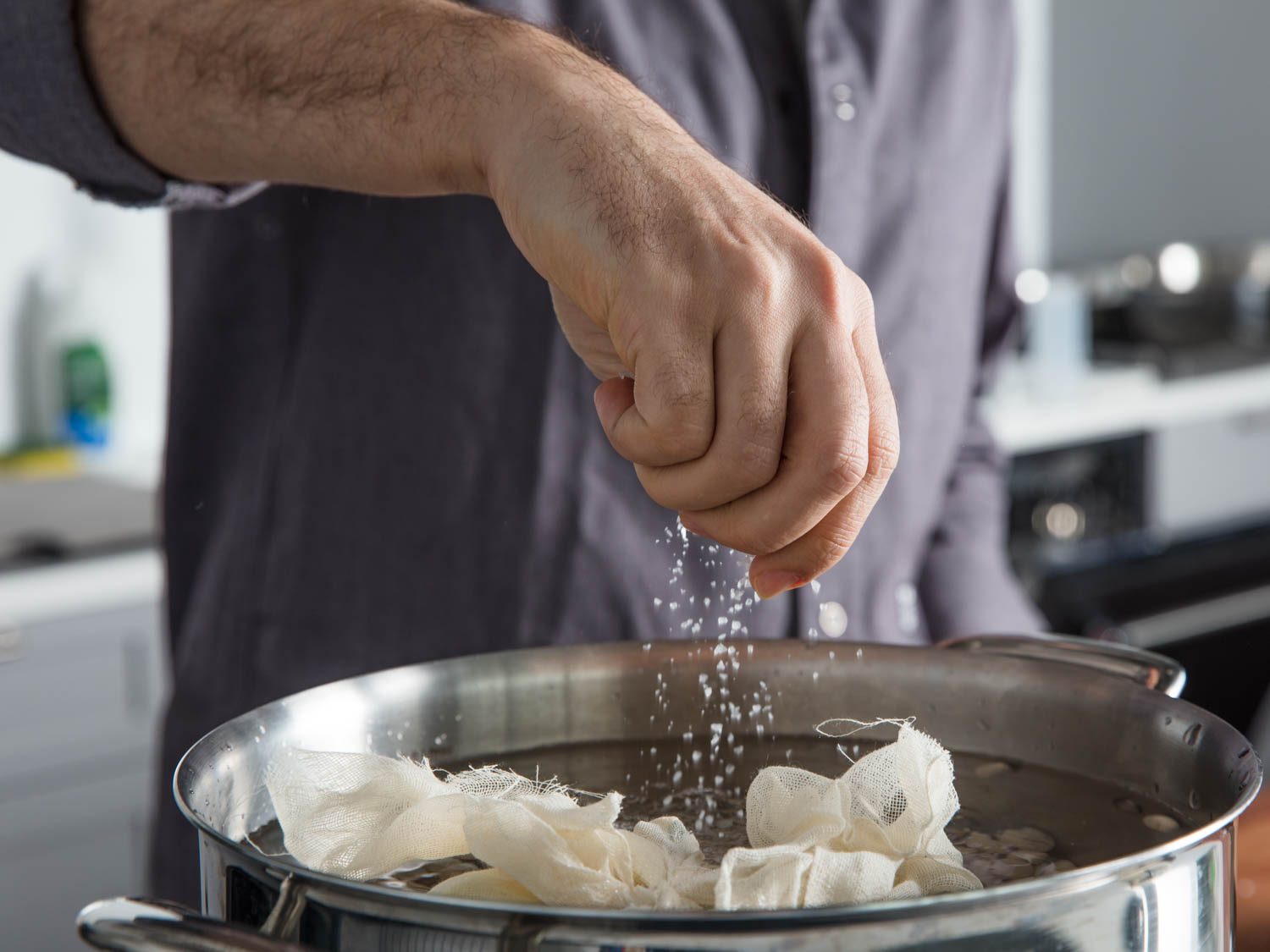
Most people will tell you no, but the answer is yes, you should salt your beans from the beginning. We’ve tested this extensively as well, and salted beans cook up better, retaining their shape and developing a more delicious, thoroughly seasoned flavor. Perhaps what’s even more surprising is that our tests revealed you should also salt the soaking water for the very best results.
How to Cook Dried Beans: Step by Step
Step 1: Pick Through the Beans
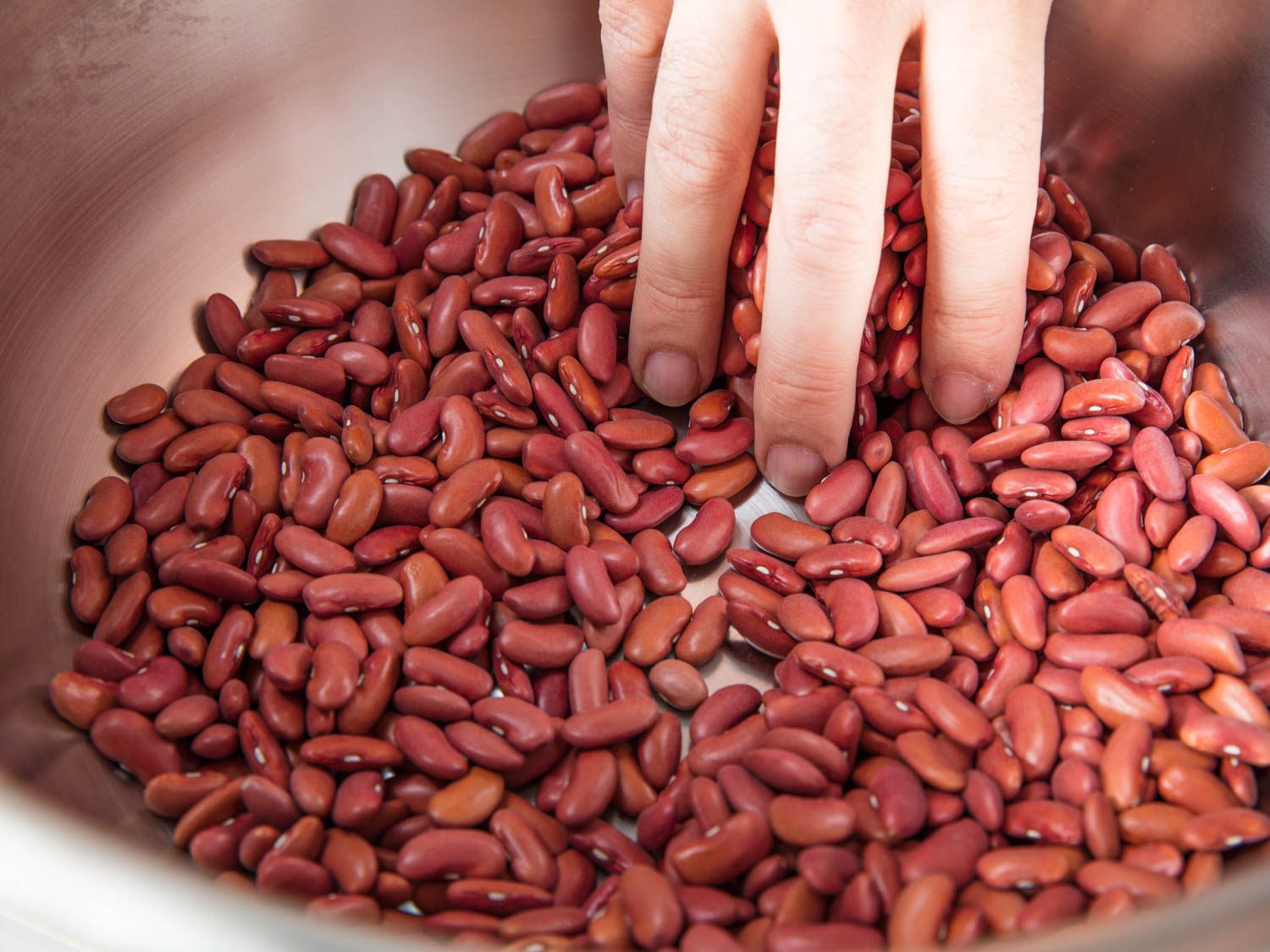
First, sift through the beans, looking for any that are off-colored, shriveled, or damaged. Also keep an eye out for small stones.
Step 2: Rinse
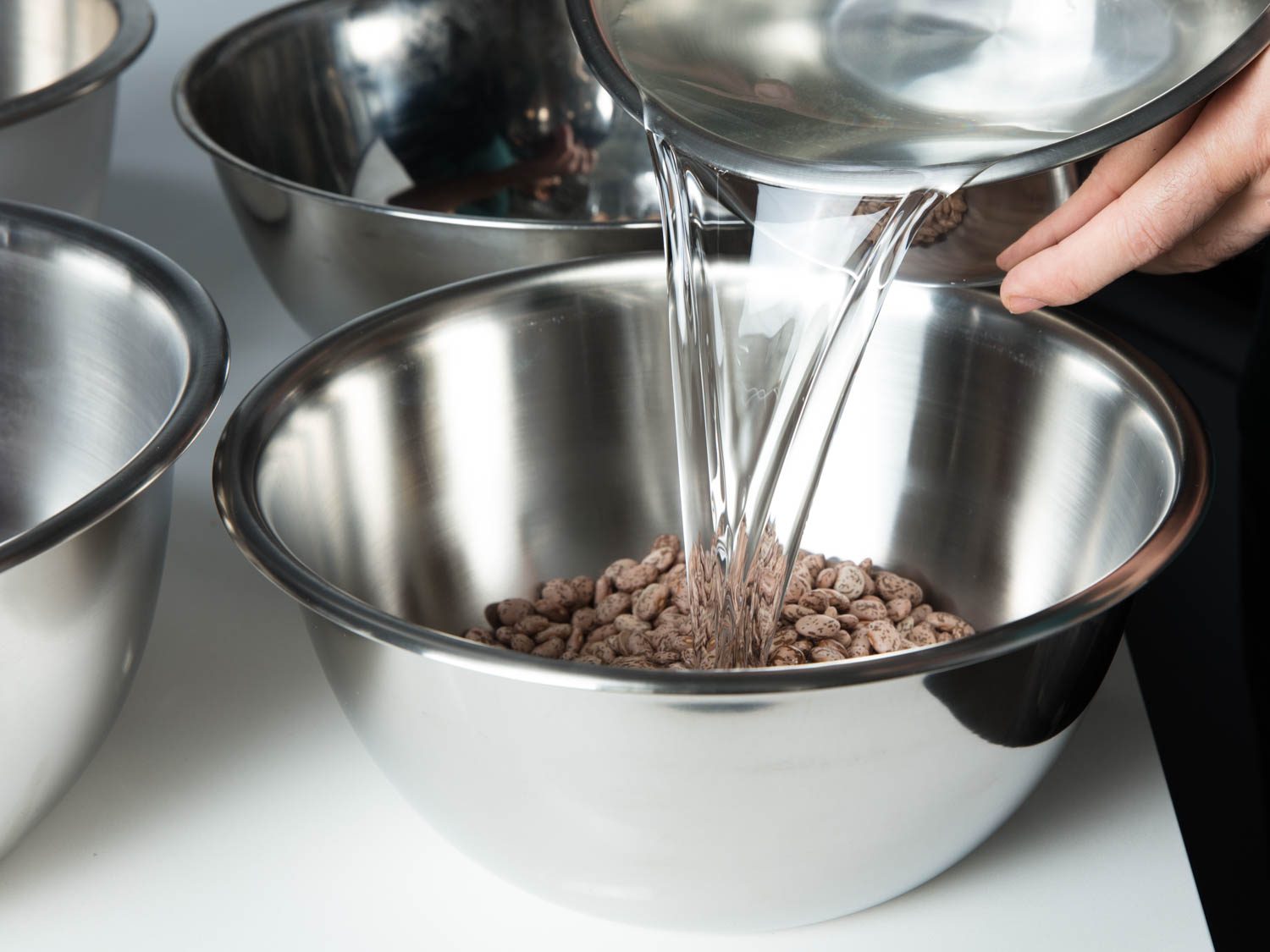
Rinse the beans under cold running water to remove any surface dust or dirt.
Step 3: Soak, if Desired, Then Drain
If you are using thin-skinned beans like black beans, black-eyed peas, split peas, or lentils, you can skip this step.
If you are using most other beans, it’s best to soak them unless you know for sure that the beans are of a high quality and are relatively fresh (i.e., that they haven’t been in storage for more than six months since they were dried); usually there’s no good way to know this, so soaking should be the default.
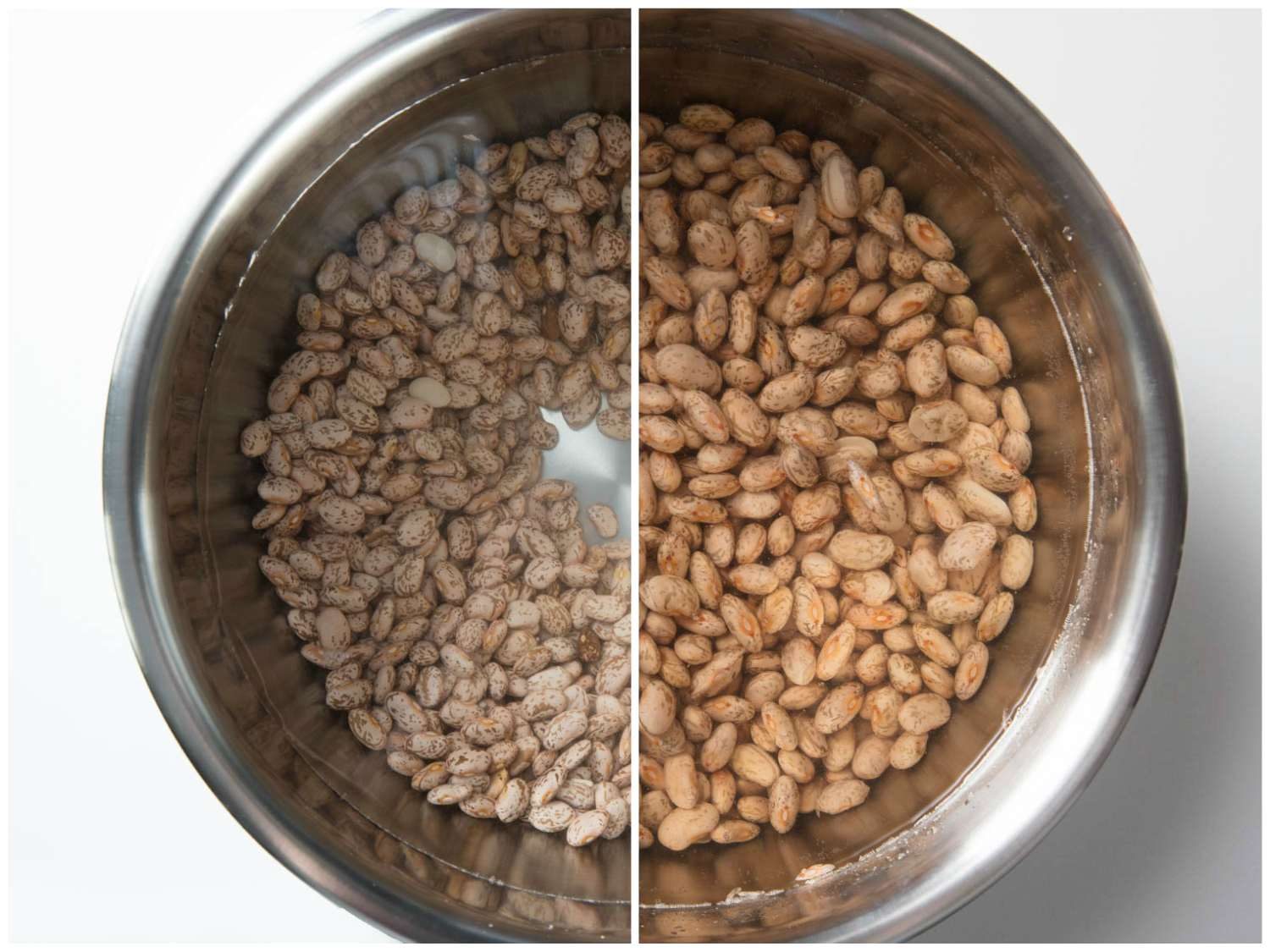
Beans swell a lot during soaking, so be sure to add enough water to ensure they’ll remain submerged.
To soak, cover the beans in enough cold water that they will remain submerged even if they swell to more than twice their original volume. If they aren’t covered with enough water and they swell above the liquid level, they will cook unevenly later.
Salt the soaking water well; it should taste pleasantly salty. Then let stand at room temperature for at least four and up to eight hours. If soaking for longer than eight hours, move the beans to the refrigerator to prevent them from fermenting. Don’t soak the beans any longer than 24 hours.
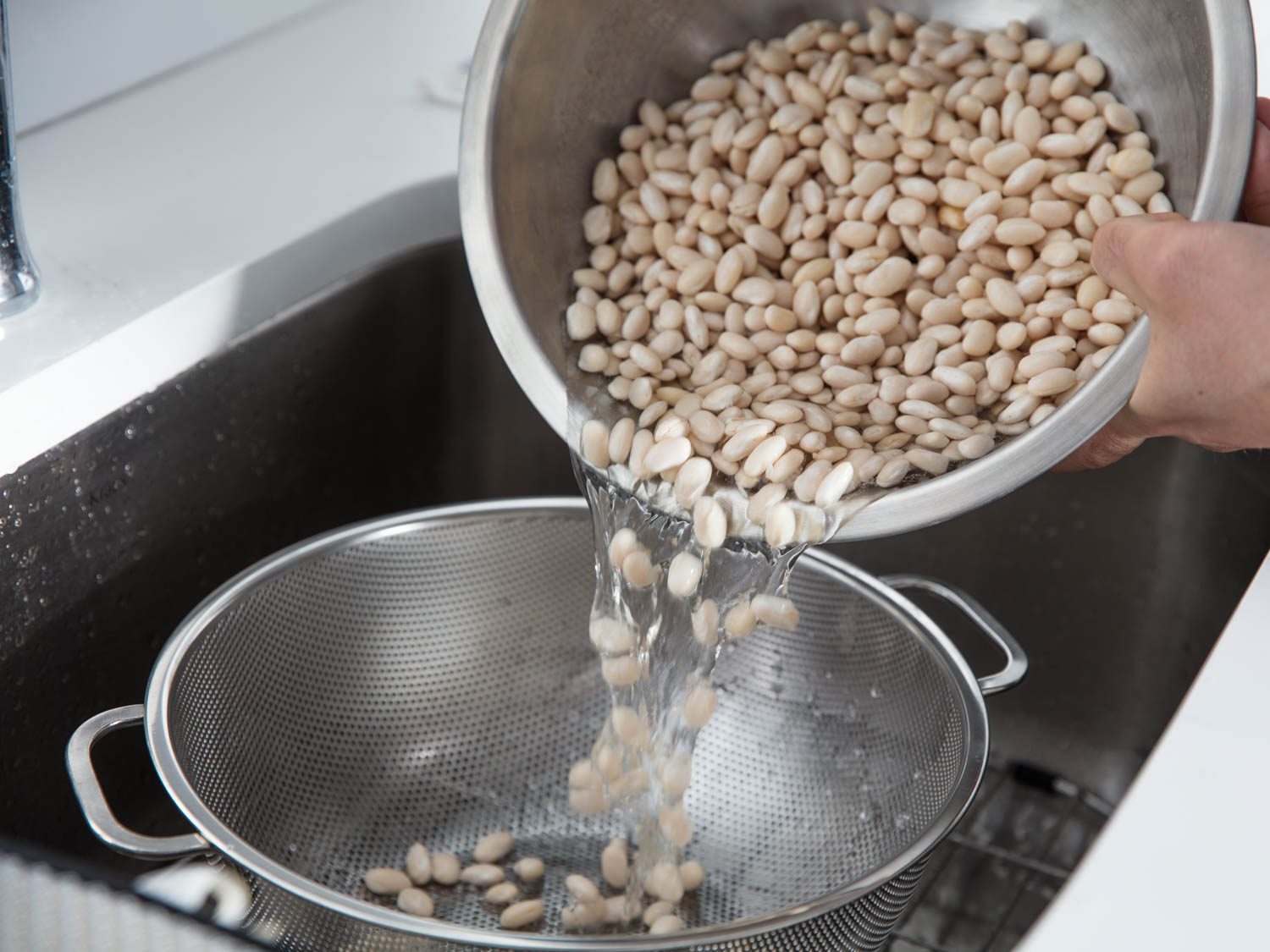
Drain the beans, then proceed immediately to the cooking step.
How to Quick-Soak Beans: If you don’t have time for a longer soak, use this quick-soaking method: Cover the dried beans with ample water and season with salt (again, the water should taste pleasantly salty).
Bring to a boil over high heat, then remove from heat. Let stand one hour, then drain and proceed to cooking.
Step 4: Cook With Aromatics
Place the beans in a pot and fill with enough cold water to cover by at least three inches. Season the water with salt, once again making sure it tastes pleasantly salty.
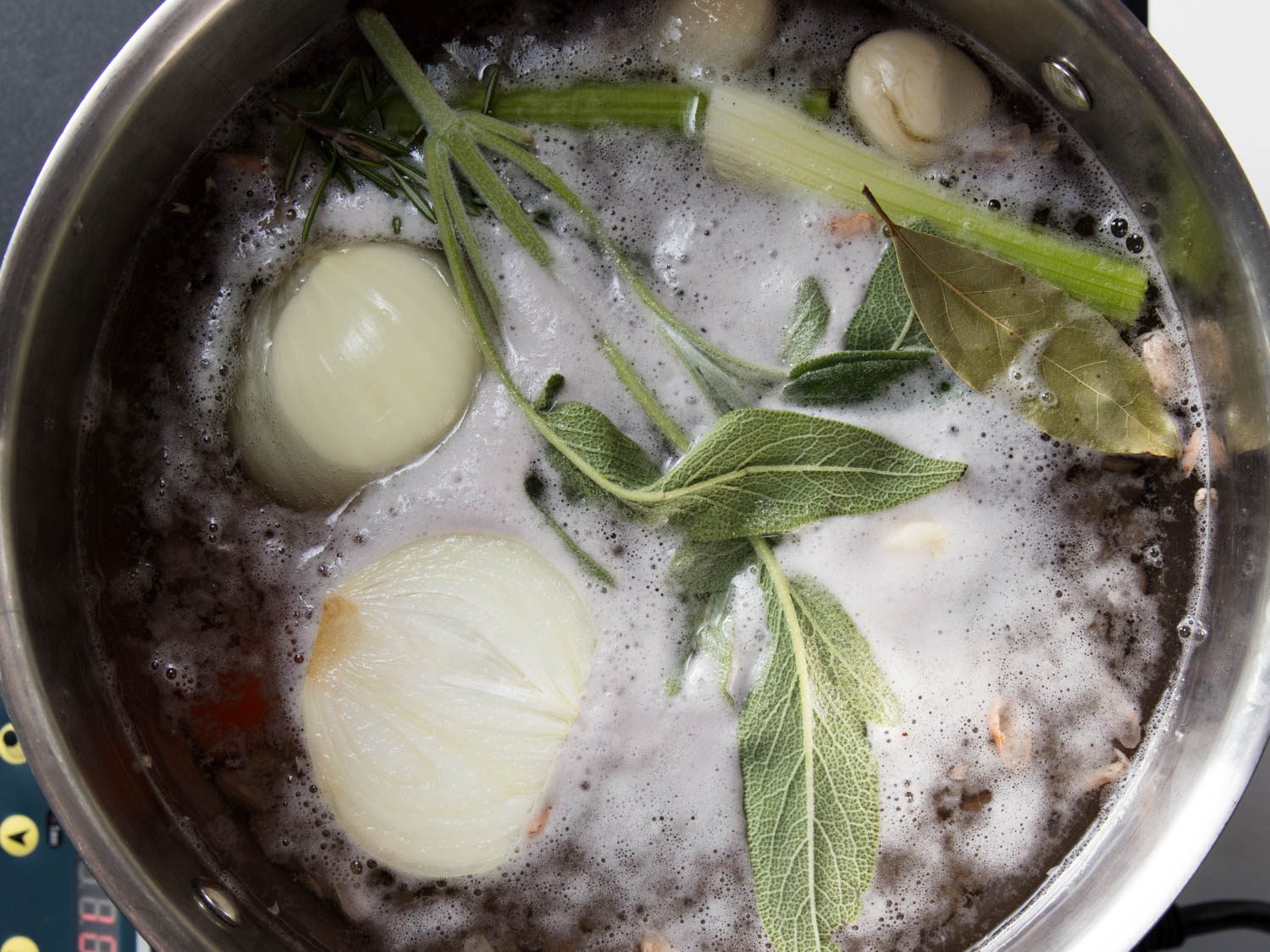
Add aromatics to the pot. This is an incredibly important step that helps make the difference between merely average beans and truly phenomenal ones. The aromatics can include any aromatic vegetable, such as the basics like onion, carrot, celery, and garlic, as well as less expected ones, like fennel and leek trimmings. Use whatever you have. The aromatics should also include herbs; in particular, I find that hearty, woodsy herbs like rosemary, sage, and a dried bay leaf are particularly delicious with most beans.
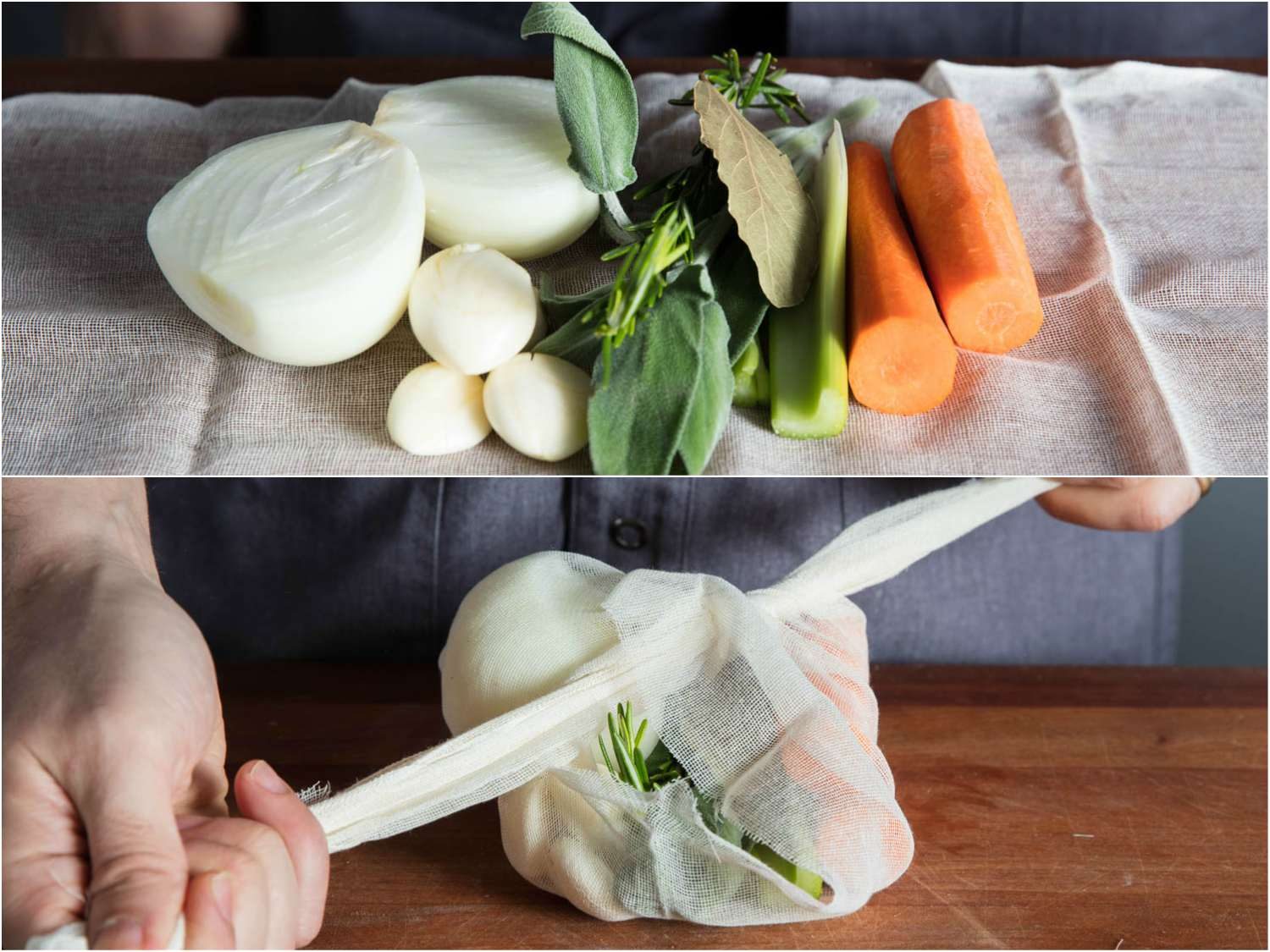
If you don’t mind picking the aromatics out later, you can just drop them into the pot. But if you have some cheesecloth, you can make a sachet that will be easier to remove later.
Bring the water to a boil, then reduce to a gentle simmer. A gentle simmer is important because you don’t want to agitate the beans too much as they cook, lest they bounce against each other and break.
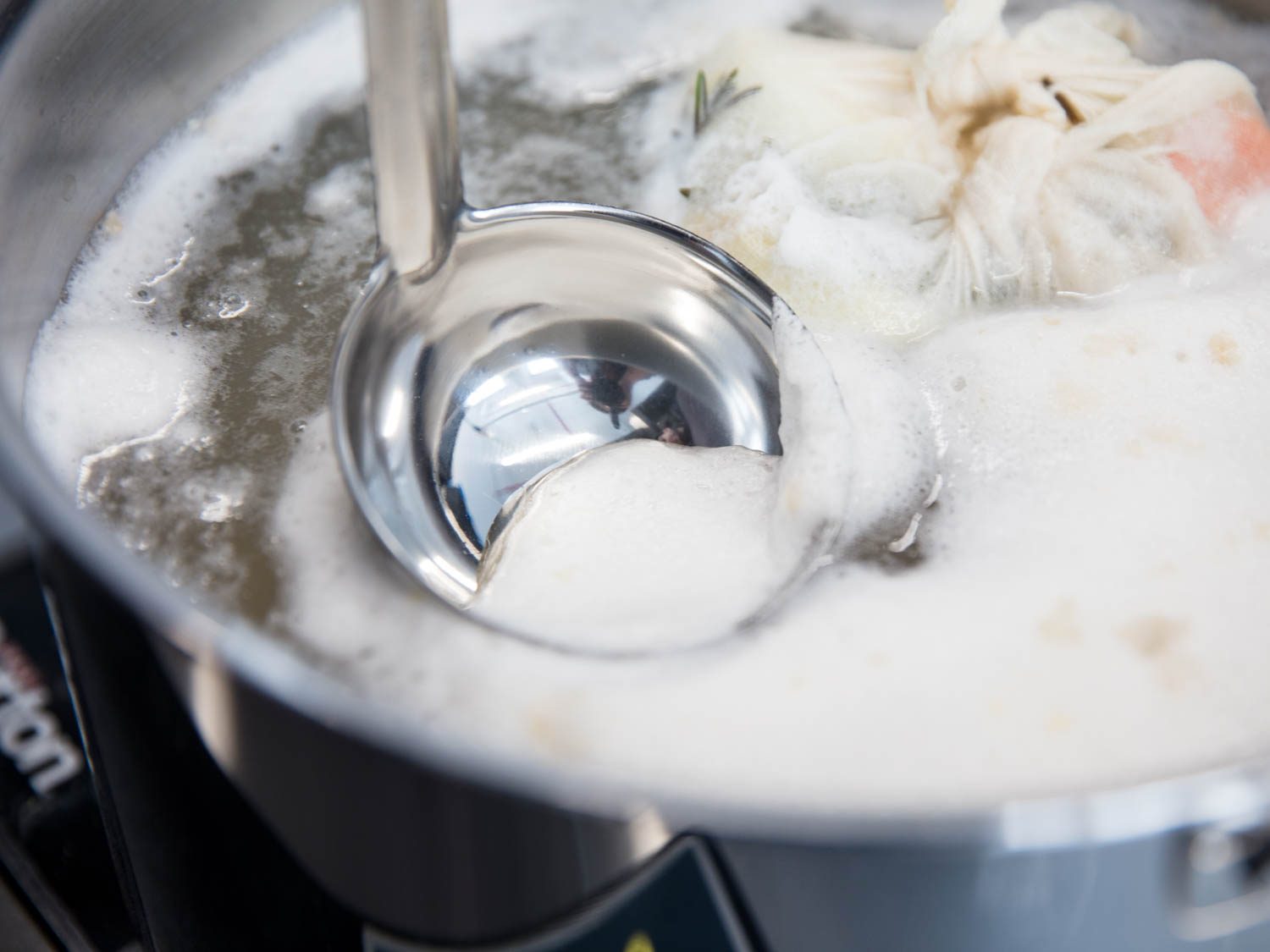
Cook the beans, skimming the surface of foam as needed, until fully tender and no trace of firmness or graininess exists. There are lots of bean-cooking charts on the internet that give times for each variety, but the truth is that cooking times can vary wildly even for a single type of bean, depending on their age and other factors. Your best bet is to check the beans from time to time until they’re done, whether that’s in one hour or three.
Add fresh water to the pot at any point, if the level drops too low.
Oven Method for Cooking Beans: You can also cook your beans in the oven, a method that works perfectly and saves stovetop space. Fill a Dutch oven with the beans, salted water, and aromatics, as described above, cover, and place in a preheated 250°F (120°C) oven. Cook, checking beans from time to time, until done.
Step 5: How to Know When Beans Are Done
Nailing perfect bean doneness is an art. Stop the cooking too soon, and you’ll end up with over-firm beans, especially if you refrigerate them after cooking (cooked beans become more firm once chilled). But let them go too long and you’ll have a pot full of mushy, broken beans.
I try to get my bean doneness just right by tasting more and more frequently as they approach doneness. I pop a bean in my mouth, then try to smash it against the roof of my mouth with my tongue. It’s properly cooked when you can do this without much trouble, and without feeling any hard or grainy bits as you smash it.
I always check more than one bean, since there’s usually some variation in doneness within the pot, and you don’t want to pull it off the heat if some of the beans aren’t done yet.
When the beans are done, just take them off the heat and let them cool in their liquid. If for some reason your beans are already overcooked (or on the verge of it), add enough cold water, or even ice, to drop the liquid temperature and halt the cooking.
Storing Cooked Beans
It’s best to store cooked beans in their cooking liquid, which helps protect them and keeps the skins from drying out. Cooked beans can be refrigerated for about four or five days, after which they usually start to smell a little funky. If you need to store them longer, use the freezer: cooked beans in their liquid freeze and defrost with little to no loss in quality.